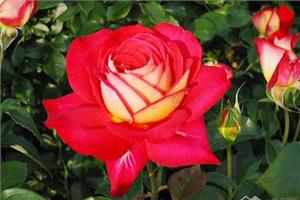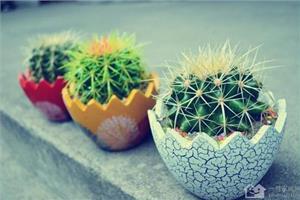There are several key points for the cultivation of Oncidium flower color.
Oncidium, also known as dancing orchid, dancing girl orchid, golden butterfly orchid, native to the tropical rain forest, flowers of various colors, long florescence, and then let's take a look at how Oncidium is raised.

Oncidium, also known as dancing girl orchid, golden butterfly orchid, tumor orchid and so on, is the general name of Oncidium in Orchidaceae. There are more than 750 native species of this genus in the world, and most of the varieties used commercially are hybrids. The plants are light and chic, the flower stems are light and drooping, the flowers are strange and lovely, resembling flying golden butterflies, and are very dynamic. It is one of the most important potted and cut flowers in the world.
Oncidium is native to the United States, Mexico, Guyana and Peru. Original leaf type (or hard leaf type) Oncidium prefers warm environment, while thin leaf type (or soft leaf type) and sword leaf type Oncidium. I like cold climate.
Oncidium has 1-3 leaves, which can be divided into thin leaf species, thick leaf species and sword leaf species. Generally speaking, there is only one flowering stem on a false bulb, and it is also possible for some sturdy two flowering stems. Some species have only 1-2 flowers on a flower stem, while others can have up to hundreds of flowers. for example, the flowers used as cut flowers are dozens of flowers per branch, hundreds to hundreds of branches, and their flowers are colorful, similar to flying golden butterflies and dancing girls, so they are also called golden butterfly orchids or dancing girls.
The flowers and colors of Oncidium are mainly yellow and brown, as well as green, white, red and magenta. Some of them are as small as mini Oncidium, others are very large, and the diameter of flowers can reach more than 12 meters. The structure of the flower is very special, its calyx sepals are equal in size, and the petals are almost the same or slightly larger than the dorsal calyx; the labellum of the flower is usually trifid, or large or small, in the shape of a violin, with a ridge at the base of the middle lobe, and a small raised spot on the ridge, which is quite peculiar, hence the name tumor orchid.
The main points of cultivation of Oncidium are as follows:
The main results are as follows: 1. the cultivation materials are made of tree ferns and oil-free hardwood in hot and humid places, while in dry places, water moss fern roots and moss can be planted in porous pots.
2. Daily management Oncidium's requirements for the environment are generally not too strict, but the winter temperature should not be lower than 15 ℃, and the air humidity is about 80% in the four seasons. Spring, summer and autumn need a semi-overcast environment. Sufficient sunshine can be given in winter, but do not expose it to the hot summer sun.
Oncidium is often propagated by individual plants. In general, do not water immediately after dividing plants, spray some water on the leaves when a little dry, and then water when new roots grow, and then spray some average fertilizer, but the concentration is not too high, generally 0.6% to 0.8%. In the maintenance process, do not pour too much water, so it is easy to rot the root, we should pay attention to ventilation and light transmission. If there are diseased plants, they should be destroyed in time and sprayed with some fungicides. The temperature and humidity during flowering are not easy to be too high or too low, which will affect the life span of flowers, shorten the flowering period, and even appear the phenomenon of bud drop or early wilting.
[temperature management] in the slow seedling stage, the temperature was 25-28 ℃ in the daytime and 23-25 ℃ at night. The new roots sprout quickly, and the temperature can be relaxed properly after the new roots grow, but keeping the above temperature is beneficial to the growth of orchid seedlings. Oncidium can change from vegetative growth to reproductive growth when the day and night temperature is (26-29 ℃) / (23-25 ℃) after bulb growth.
[humidity management] the relative humidity should be controlled at 60%, 80%, 80%, 80%, 80%, 80%, 80%, 80%, 80%, 80%, 80%, 80%, 80%, 80%, 80%, 80%, 80%, 80%, 80%, 80%, 80%, 80%, 80%, 80%, 80%, 80%, 80%, 80%, 80%, 80%, 80%. In the hot summer, water should be sprayed on the ground, platform and leaves around the plant to increase air humidity and maintain good ventilation, otherwise it will lead to poor plant growth and false bulbs are prone to rot.
The above is the relevant introduction of this article, I believe you have a simple understanding of this after reading it, if necessary, you can continue to pay attention to the No. 1 home network for more information.
Related
- Wuhan Hospital Iron Tree Blooming Result Was Instantly Frightened by the Gardener Master
- Which variety of camellia is the most fragrant and best? Which one do you like best?
- What is the small blue coat, the breeding methods and matters needing attention of the succulent plant
- Dormancy time and maintenance management of succulent plants during dormancy
- Minas succulent how to raise, Minas succulent plant pictures
- What are the varieties of winter succulent plants
- How to raise succulent plants in twelve rolls? let's take a look at some experience of breeding twelve rolls.
- Attention should be paid to water control for succulent plants during dormant period (winter and summer)
- Watering experience of twelve rolls of succulent plants
- Techniques for fertilizing succulent plants. An article will let you know how to fertilize succulent plants.



